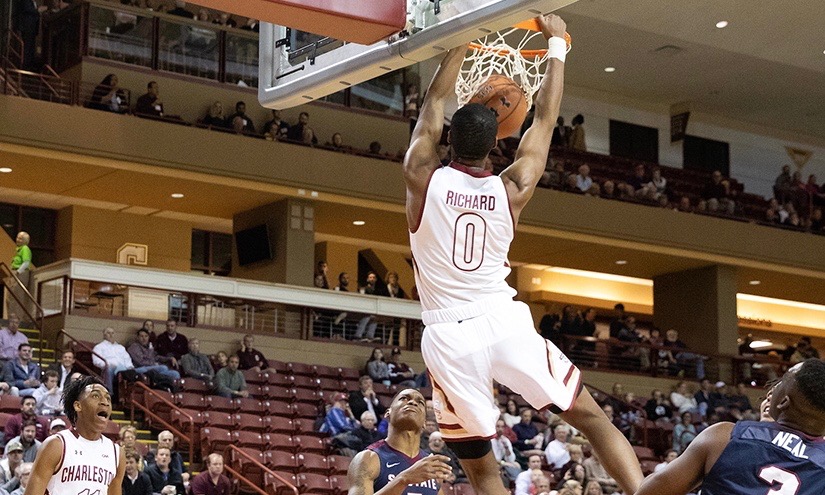
The 2020 Colonial Conference tournament will put the madness in March. With its top five teams packed within three games in the final standings, the conference has been competitive all year, and it would be naive to expect anything less entering the postseason.
On the line? A trip to the NCAA tournament. A chance to keep playing basketball. A chance to grasp the same hope that carried Wichita State to the Final Four in 2013. And a chance to make your name forever remembered
In order to repeat the Shockers’ run from seven years ago, these teams have to believe they can beat anyone. Once they get over that mental hurdle, they have to play their game and not allow outside noise to impact the gameplan, and the sooner these teams can block things out, the better off they will be.
The Favorite: Hofstra
Hofstra head coach Joe Mihalich has found the equation that helps get the most of the players he’s working with. In doing so, he has instilled a sense of resilience in his team.
The Pride have won 12 of 15 since Jan. 2’s 88-61 blowout loss at William & Mary, including nine of the last 10. They have beaten every other team in the league, but possibly the most notable thing about this team is that it beat UCLA — which currently sits atop the PAC-12 — by 10 points on Nov. 21.
But all year, Hofstra has given a lot of effort on both ends of the floor. They lead the Colonial with a 10.6 net rating, meaning that every 100 possessions, they score 10.6 more points than their opponents. Perhaps the most impressive facts about this team are not only that it has put up 100 points in regulation twice, but also that it gave up 80 points only three times.
Team to Watch: Charleston
If there’s one question about Hofstra, it’s depth beyond its starting five. Charleston’s situation is just the opposite. Compared to the Pride, who have just five players averaging more than 12 minutes and whose best players, Desure Buie and Eli Pemberton, average around 37 minutes per game, the Cougars play seven or eight guys consistently.
With no player averaging more than 34 minutes, Charleston — which won six of eight games against the other four teams wrestling to be atop the conference — is the best, most rested team in the conference. And its offensive dynamic is interesting and reminiscent of the small-school, ultra-balanced type of ball.
Grant Riller leads Charleston with 33.5 minutes and 21.7 points per game and his only teammate averaging double-figures in scoring is Brecon Galloway, who sits at 11.2 points per game. I expect head coach Earl Grant to shorten his bench a tad to give Riller and Galloway the opportunity to carry the team to the NCAA tournament.
Players to Watch: Desure Buie
Whether Hofstra continues beyond the conference tournament has a lot to do with how Desure Buie performs. The redshirt senior ignited the Pride in the win over UCLA, scoring 29 points and adding seven assists, but what Hofstra fans will likely remember about this season is his 44-point outing against Elon.
Regardless, this guy is a pure scorer. Five days before catching fire in the Elon game, in which he hit six three-pointers, he had a similar performance at Towson, as he hit six threes and scored 35 points.
But down the stretch, he had a shaky run, and that’s what concerns me. He was held to under 10 points twice in the final five games of the regular season — compared to just once prior to that, — but in the other three games, he averaged about 26 points. That said, he has taken on more of a distributor role of late, recording nine assists in each of the Pride’s last three games and averaging seven dimes in February.
My Pick: Charleston
I expect this to come down to Charleston and Hofstra, and I think the depth and shooting ability of the Cougars will make the difference. They have three starters who shoot over 35 percent from three, and have made 10 or more three-pointers in nine games this season.
My concern with Hofstra begins with its mediocrity against the best teams in the conference. Not only did they go 4-4 against Charleston, Delaware, Towson and William & Mary, but it failed to shoot 50 percent from the field in over a third of its games.




